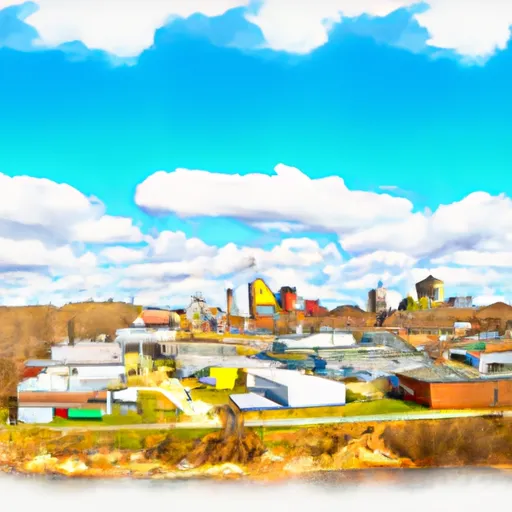-
 Snoflo Premium
Snoflo Premium
Get unlimited access to all our content
With no Ad interruptions! - Start Your Free Trial Login with existing account
Keewatin
Eden Index
Climate
4.8
•
Recreation
2.8
•
Community
0.8
•
Safeguard
3.1/10

Keewatin, Minnesota is a small city located in Itasca County, in the northern part of the state. The region experiences a humid continental climate, characterized by cold winters and warm summers. Average temperatures range from around 10°F (-12°C) in January to 70°F (21°C) in July. The area receives significant snowfall during winter months, providing opportunities for winter sports such as snowmobiling and cross-country skiing.
Keewatin is surrounded by numerous lakes and rivers, making it a haven for outdoor enthusiasts. The hydrology constituents in the area include the nearby Trout Lake, which offers excellent fishing for walleye, northern pike, and bass. Additionally, the Big Fork River flows through the city, providing opportunities for canoeing, kayaking, and tubing.
Outdoor recreation opportunities abound in Keewatin, with hiking and biking trails available for exploration. Nearby Chippewa National Forest offers extensive trails for hiking and wildlife viewing. Additionally, the area is known for its hunting opportunities, with deer, grouse, and bear hunting being popular activities.
In conclusion, Keewatin, Minnesota, with its continental climate, abundant water resources, and diverse outdoor recreational offerings, is a magnet for nature lovers and adventure seekers alike.
What is the Eden Index?
The Snoflo Eden Index serves as a comprehensive rating system for regions, evaluating their desirability through a holistic assessment of climate health, outdoor recreation opportunities, and natural disaster risk, acknowledging the profound impact of these factors on livability and well-being.
Climate Health Indicator (CHI): 4.8
Keewatin receives approximately
745mm of rain per year,
with humidity levels near 82%
and air temperatures averaging around
4°C.
Keewatin has a plant hardyness factor of
3, meaning
plants and agriculture in this region thrive during a short period during spring and early summer. Most
plants will die off during the colder winter months.
By considering the ideal temperature range, reliable water supplies, clean air, and stable seasonal rain or snowpacks, the Climate Health Indicator (CHI) underscores the significance of a healthy climate as the foundation for quality living.
A healthy climate is paramount for ensuring a high quality of life and livability in a region, fostering both physical well-being and environmental harmony. This can be characterized by ideal temperatures, reliable access to water supplies, clean air, and consistent seasonal rain or snowpacks.
Weather Forecast
Streamflow Conditions
Mississippi Headwaters
Area Rivers
Mississippi Headwaters
Snowpack Depths
Mississippi Headwaters
Reservoir Storage Capacity
Mississippi Headwaters
Groundwater Levels
Recreational Opportunity Index (ROI): 2.8
The Recreational Opportunity Index (ROI) recognizes the value of outdoor recreational options, such as parks, hiking trails, camping sites, and fishing spots, while acknowledging that climate plays a pivotal role in ensuring the comfort and consistency of these experiences.
Access to outdoor recreational opportunities, encompassing activities such as parks, hiking, camping, and fishing, is crucial for overall well-being, and the climate plays a pivotal role in enabling and enhancing these experiences, ensuring that individuals can engage in nature-based activities comfortably and consistently.
Camping Areas
| Campground | Campsites | Reservations | Toilets | Showers | Elevation |
|---|---|---|---|---|---|
| Old Railroad Bridge - St. Croix National Scenic River | None | 782 ft | |||
| Snake River City Campground | 12 | 1,257 ft | |||
| Sunrise Ferry Landing - St. Croix National Scenic River | None | 789 ft | |||
| McCarthy Beach State Park | 90 | 1,393 ft | |||
| Isanti County Fairgrounds | None | 956 ft | |||
| Lake Byllesby Regional Park | 60 | 868 ft | |||
| Button Box ? George Washington State Forest | 12 | 1,400 ft | |||
| Woodenfrog - Kabetogama State Forest | 60 | 1,126 ft | |||
| County O Landing - St. Croix National Scenic River | None | 781 ft | |||
| Lebanon Hills Regional Park | 93 | 979 ft |
Nearby Fishing
Nearby Ski Areas
Catastrophe Safeguard Index (CSI):
The Catastrophe Safeguard Index (CSI) recognizes that natural disaster risk, encompassing floods, fires, hurricanes, and tornadoes, can drastically affect safety and the overall appeal of an area.
The level of natural disaster risk in a region significantly affects safety and the overall livability, with climate change amplifying these risks by potentially increasing the frequency and intensity of events like floods, fires, hurricanes, and tornadoes, thereby posing substantial challenges to community resilience and well-being.
Community Resilience Indicator (CRI): 0.8
The Community Resilience Indicator (CRI) recognizes that education, healthcare, and socioeconomics are crucial to the well-being of a region. The CRI acknowledges the profound impact of these elements on residents' overall quality of life. By evaluating educational resources, healthcare accessibility, and economic inclusivity, the index captures the essential aspects that contribute to a thriving community, fostering resident satisfaction, equity, and social cohesion.

